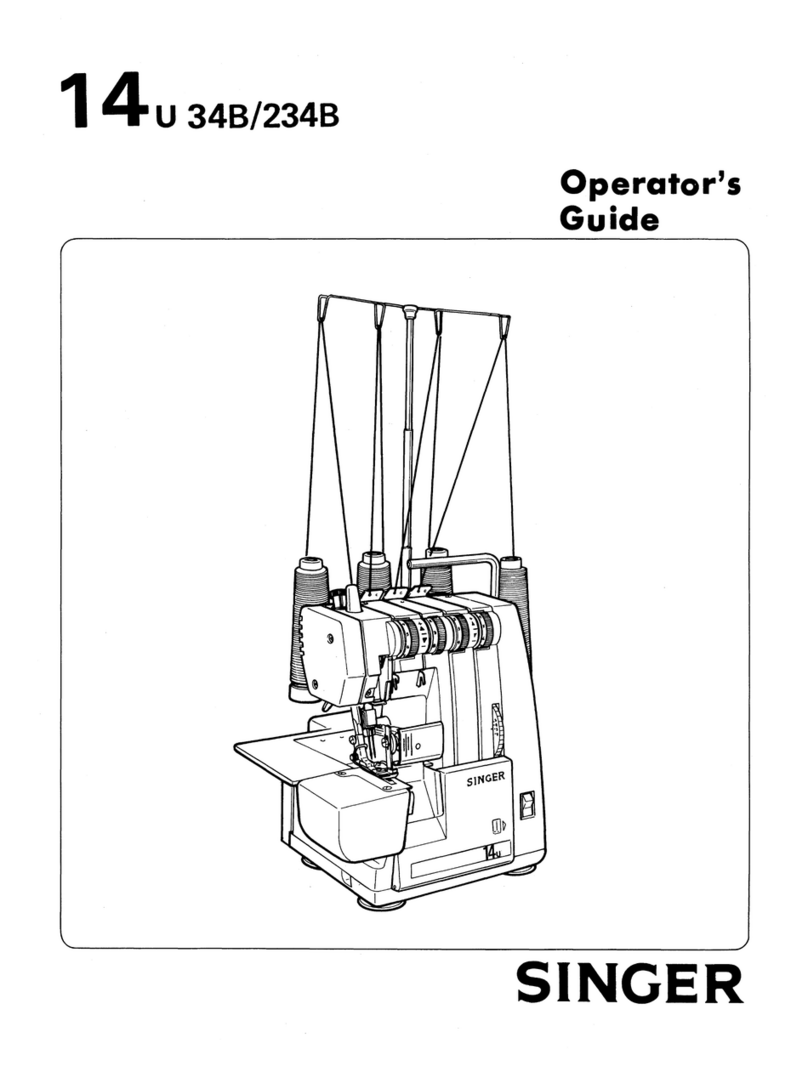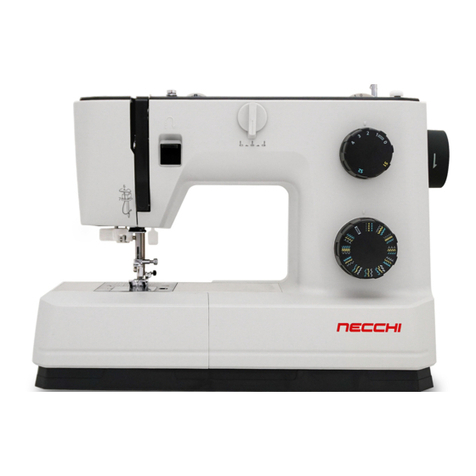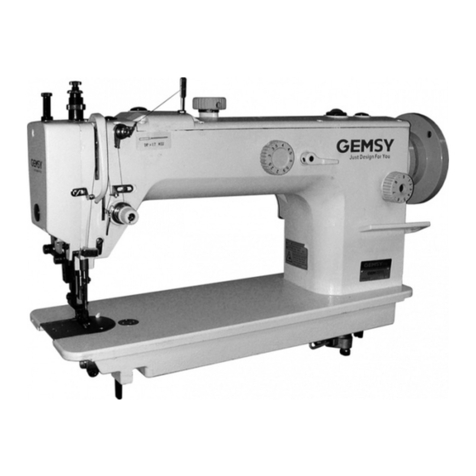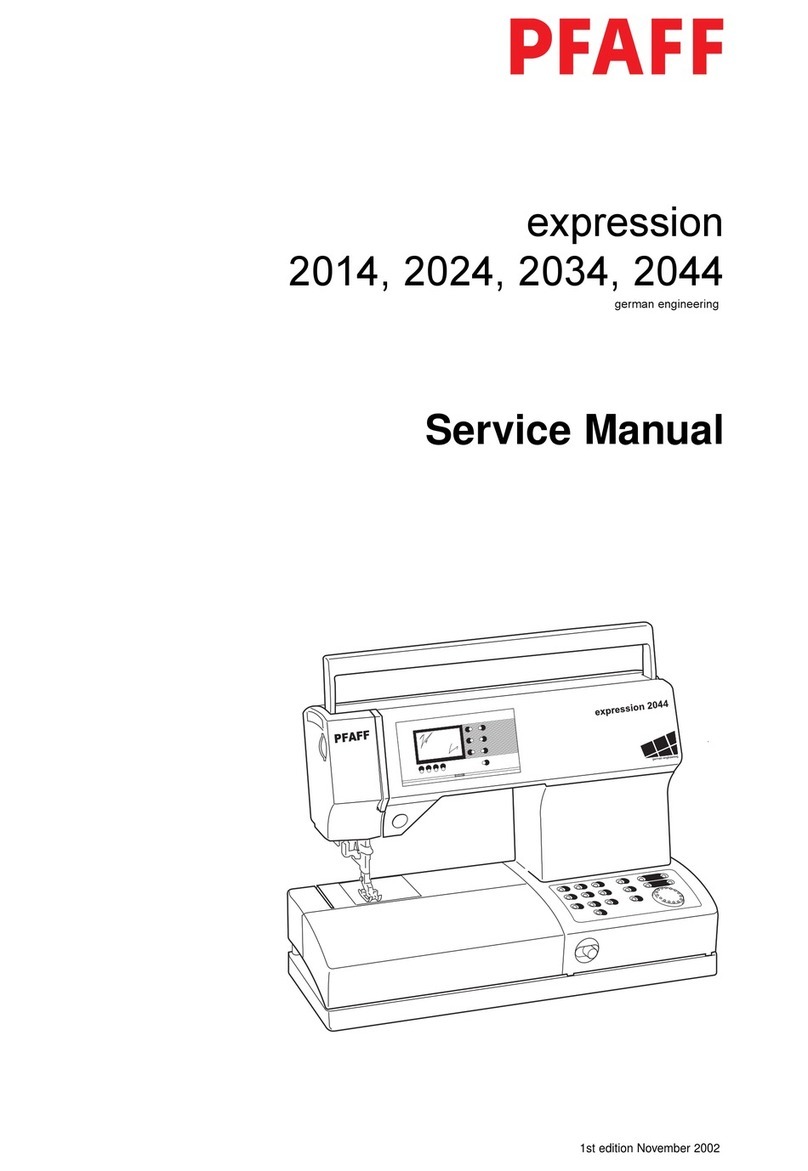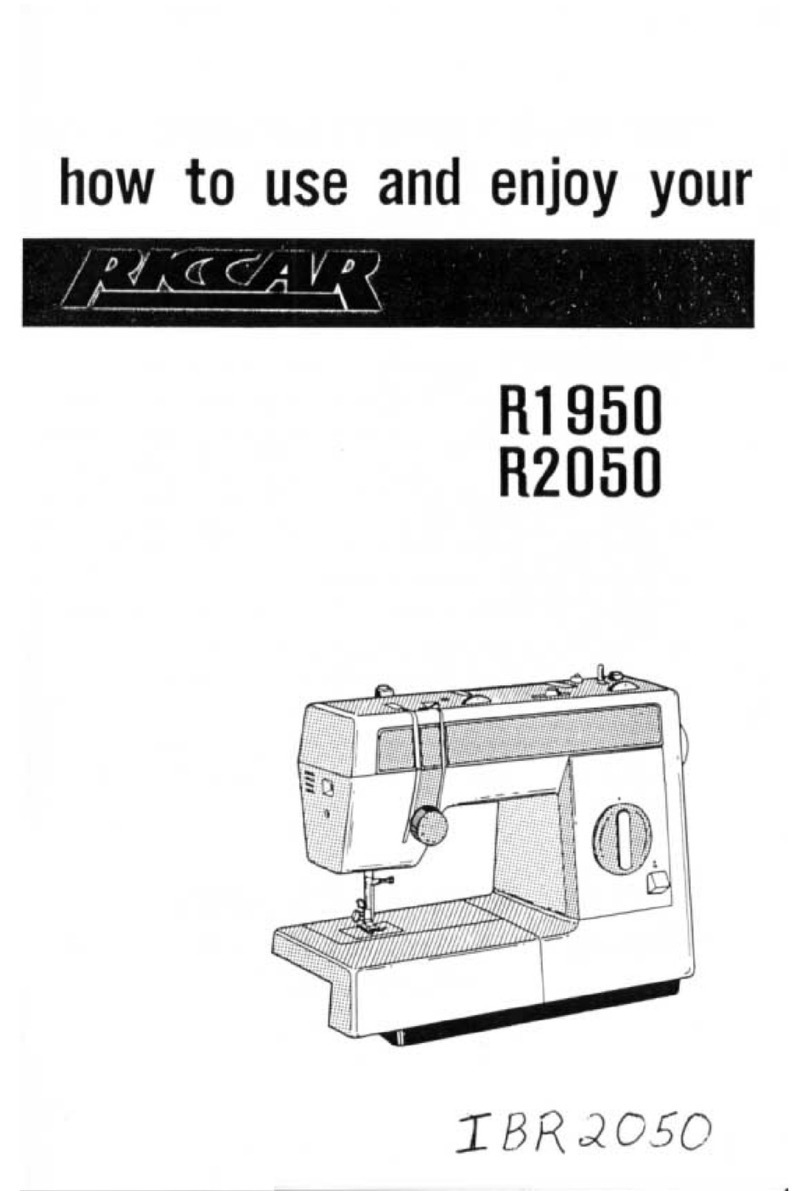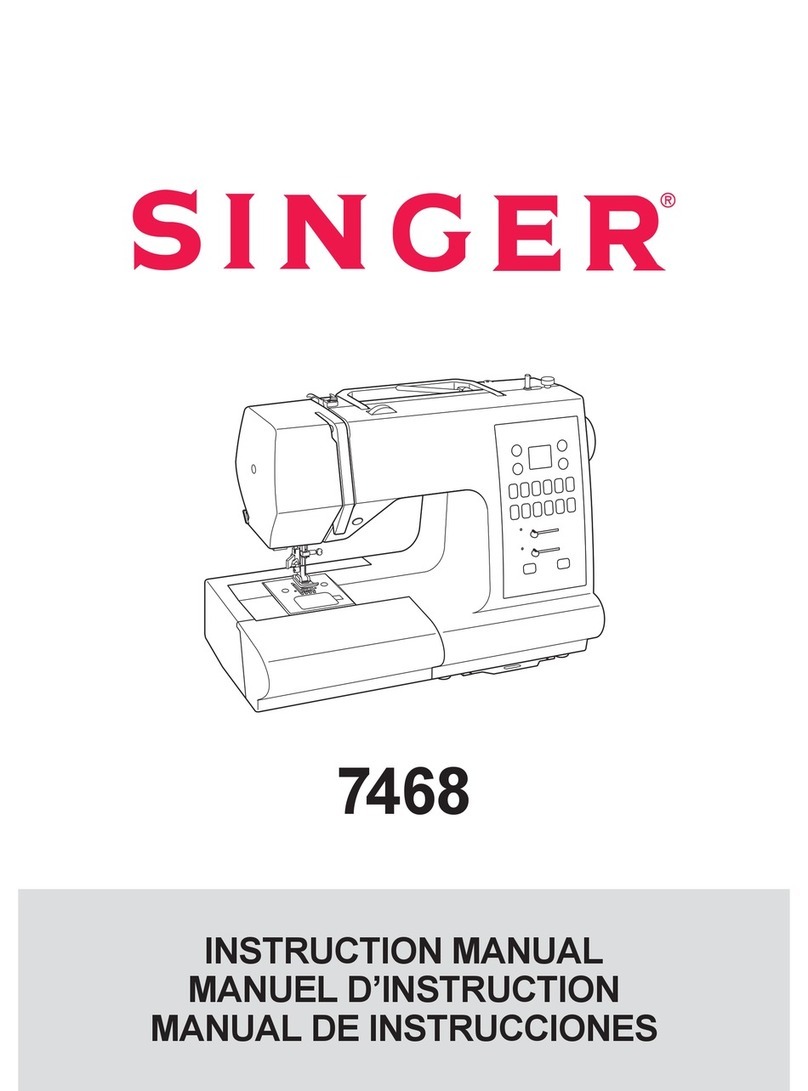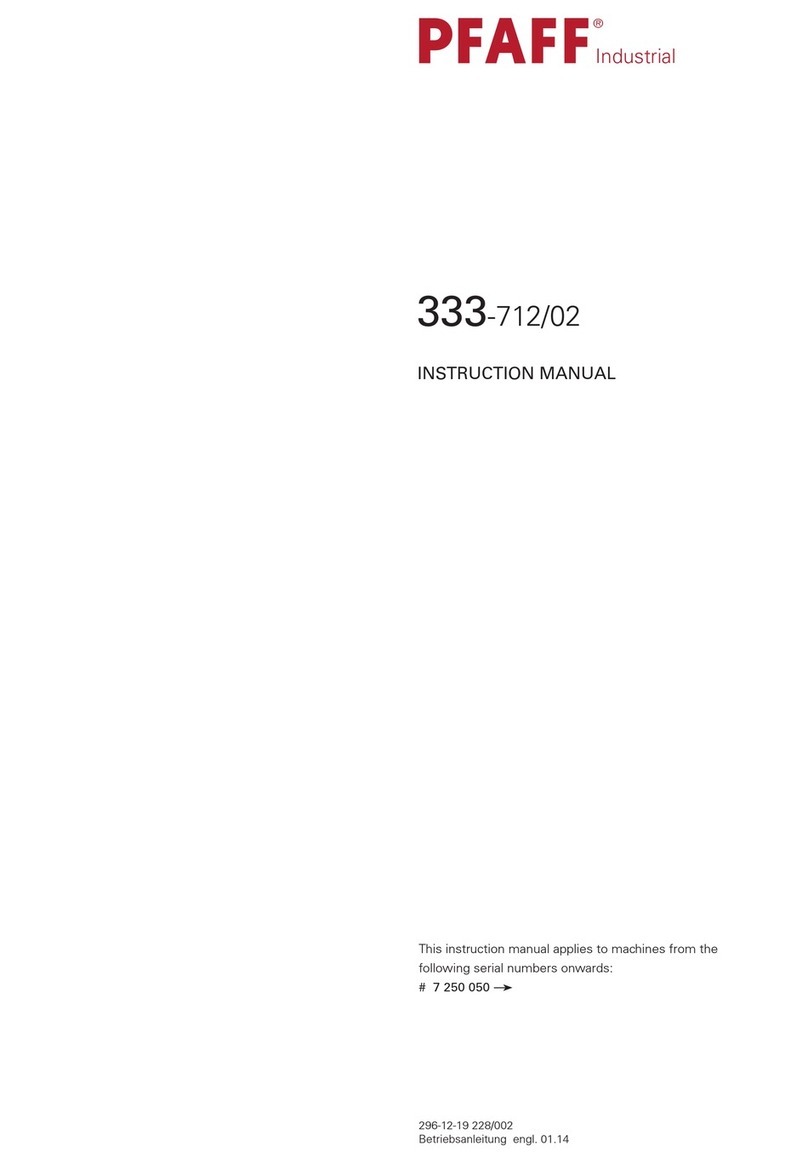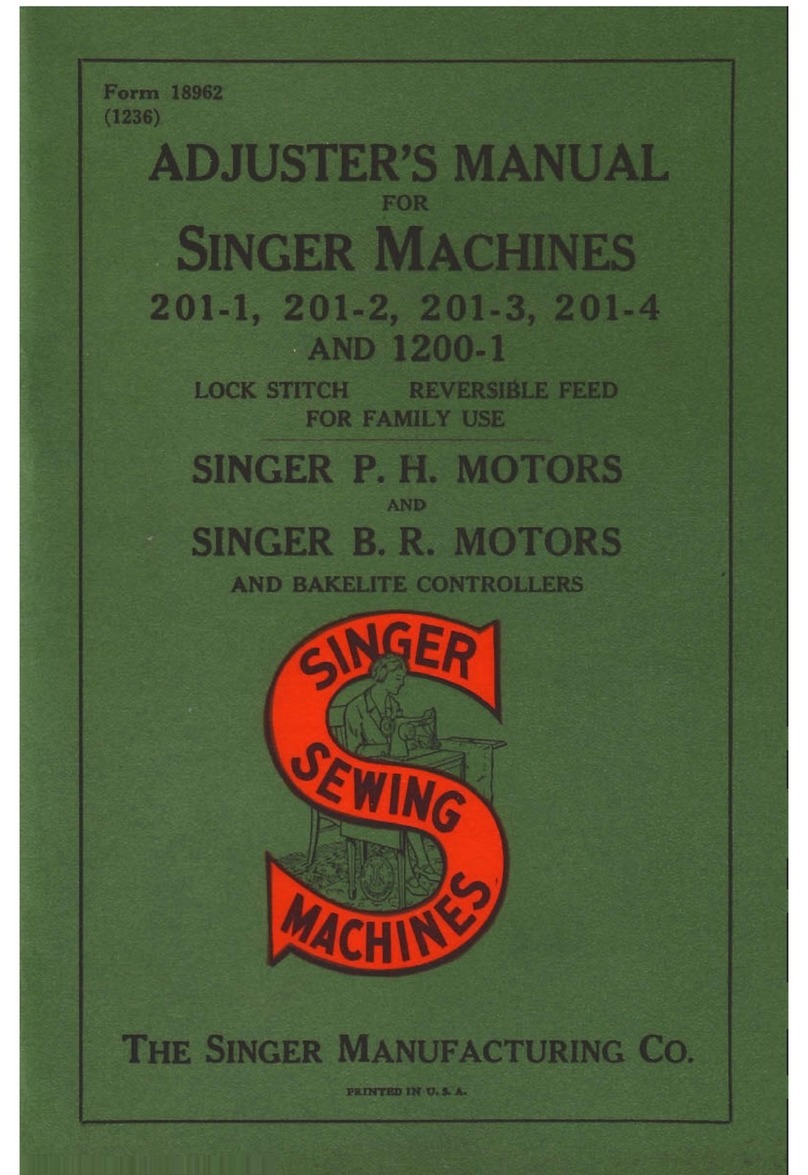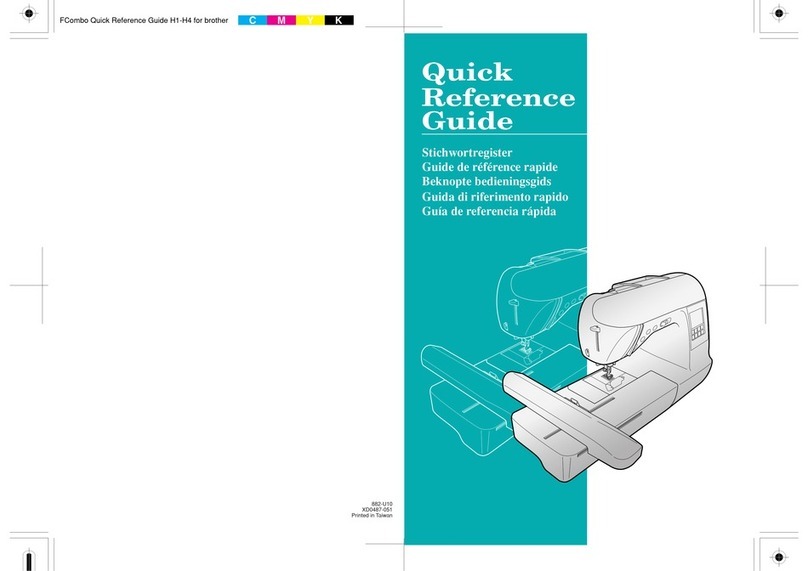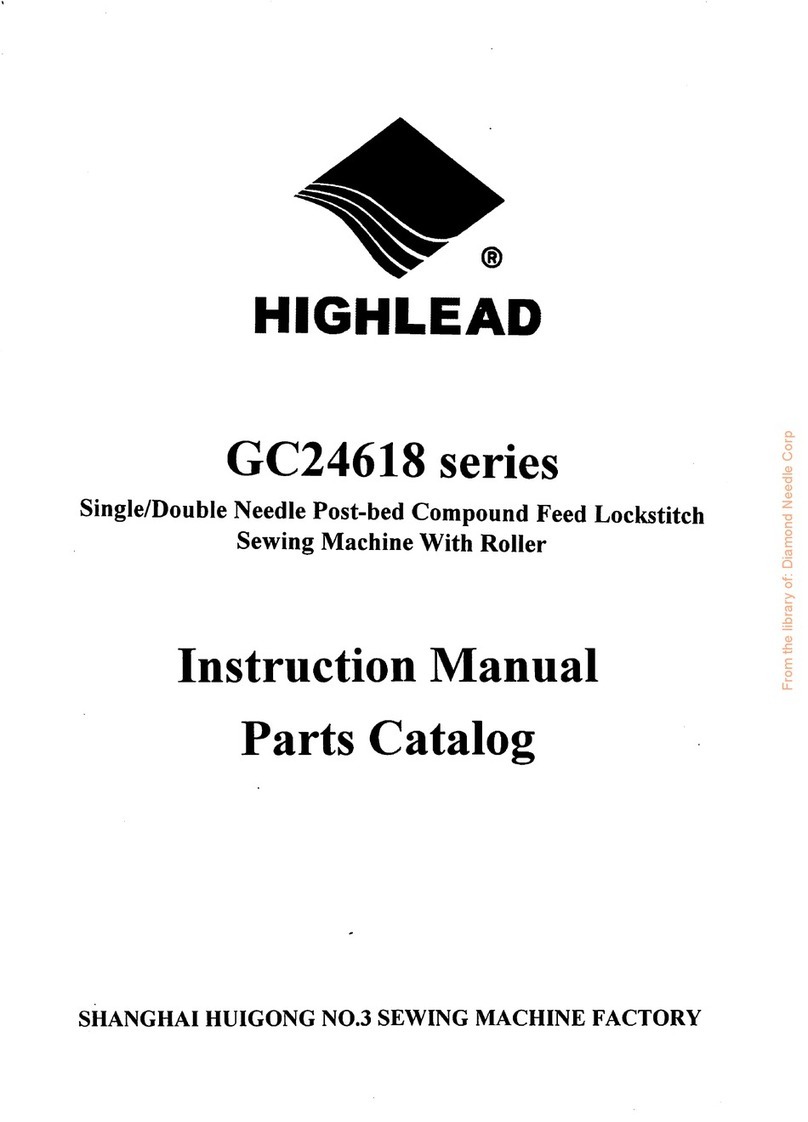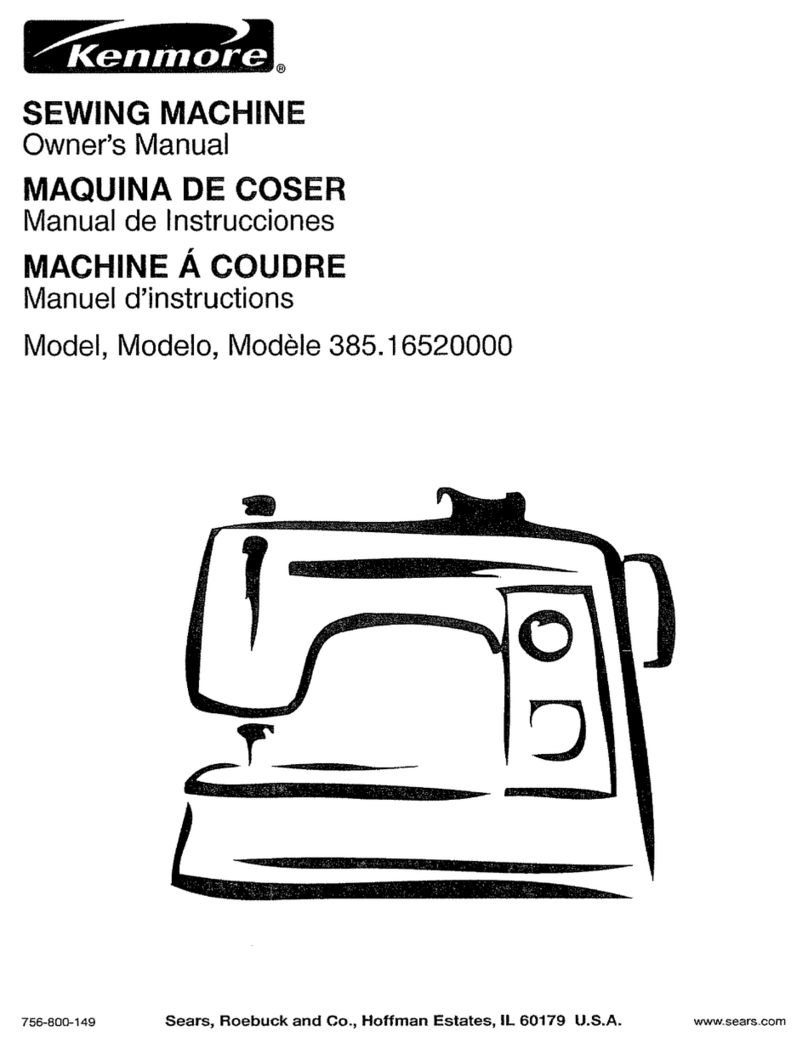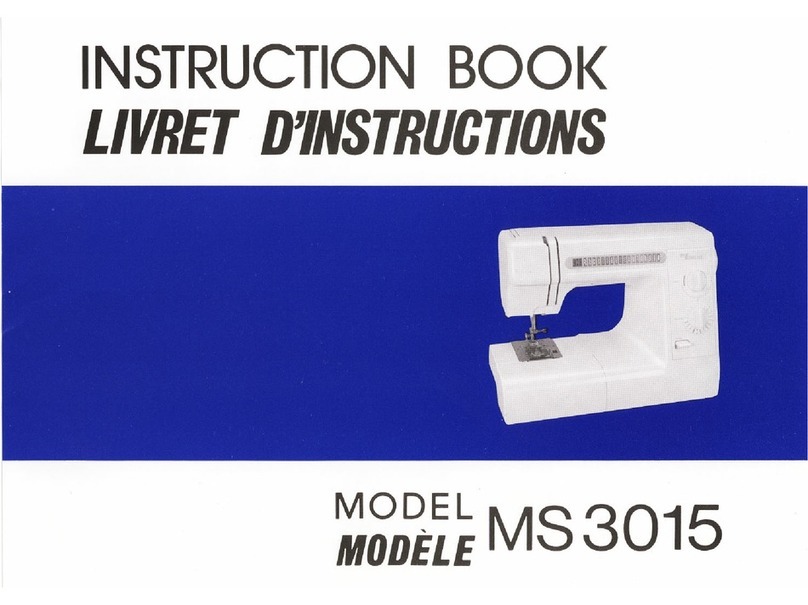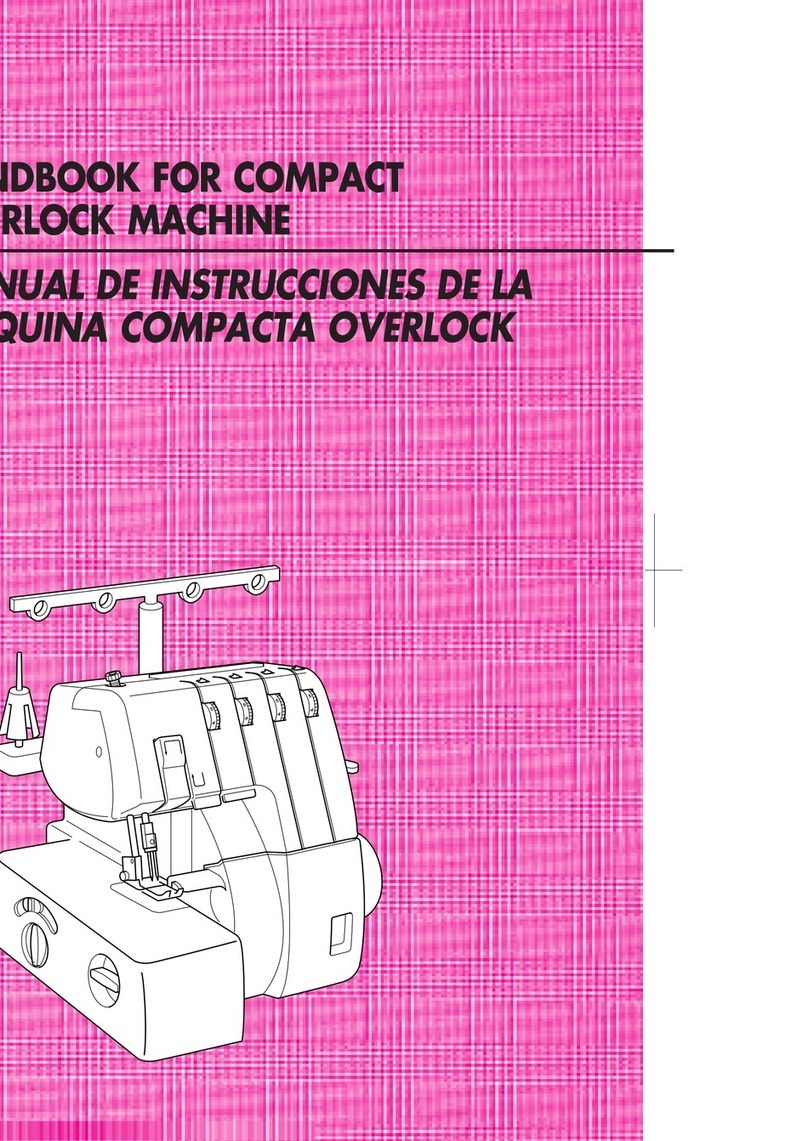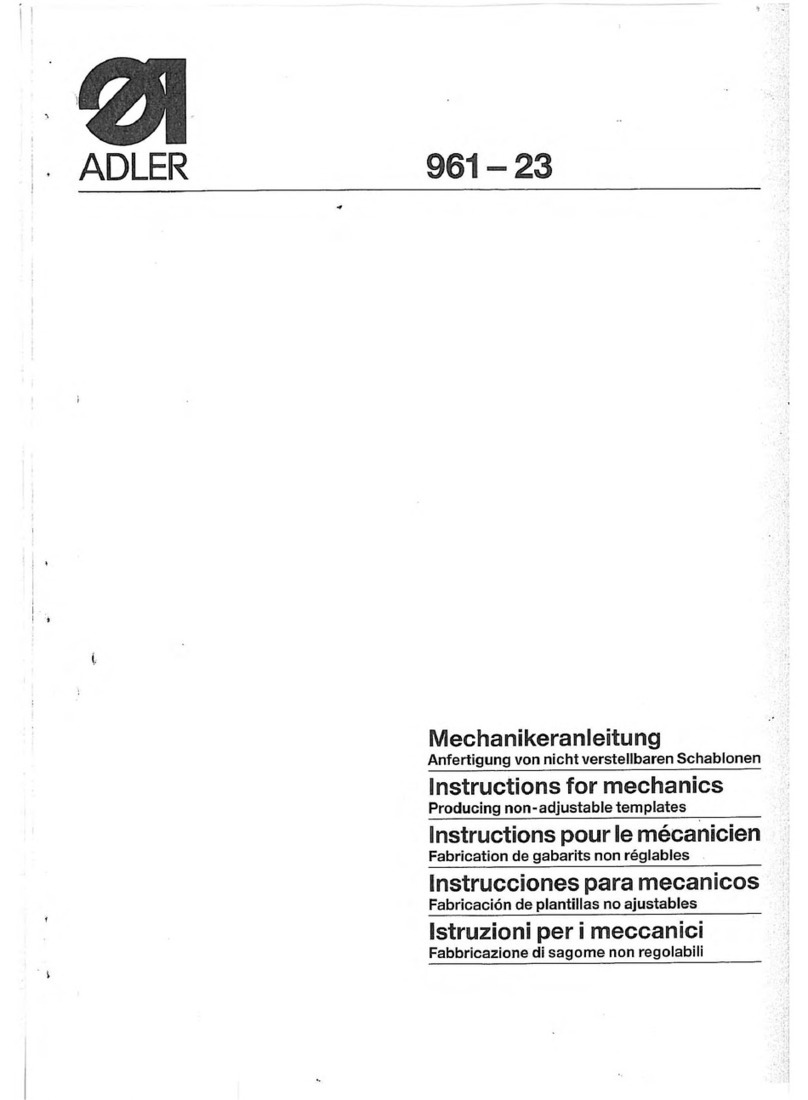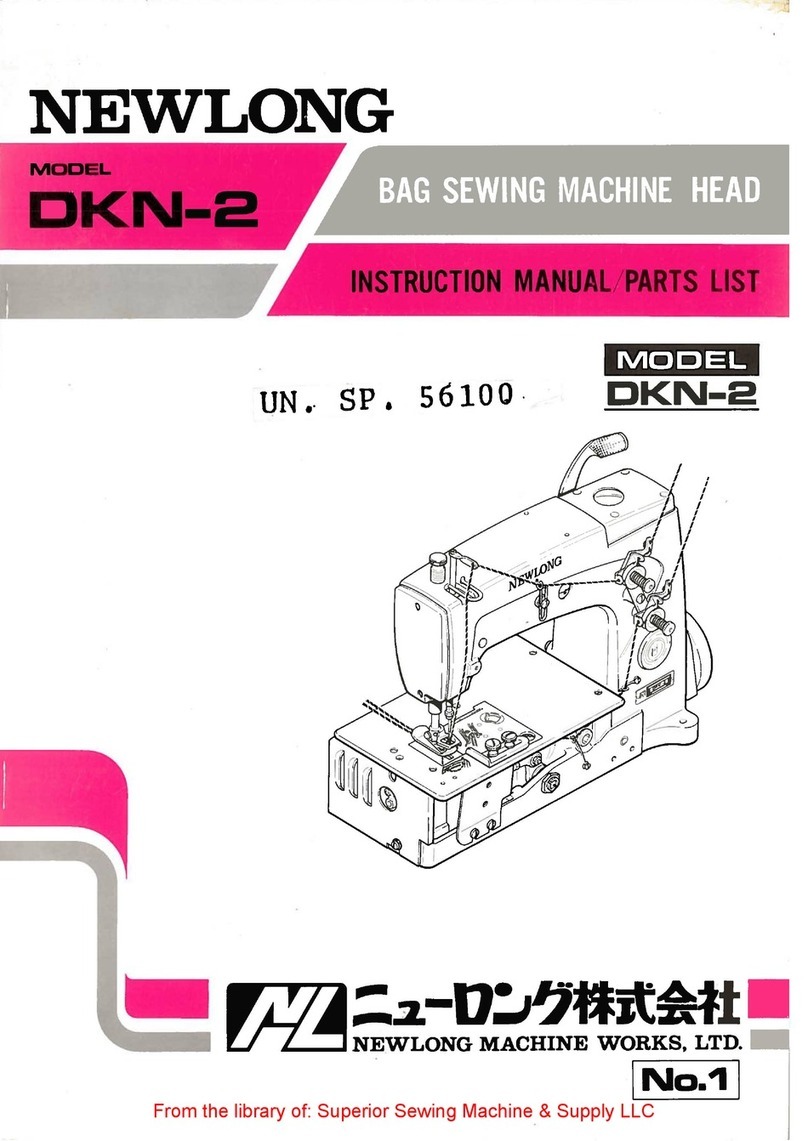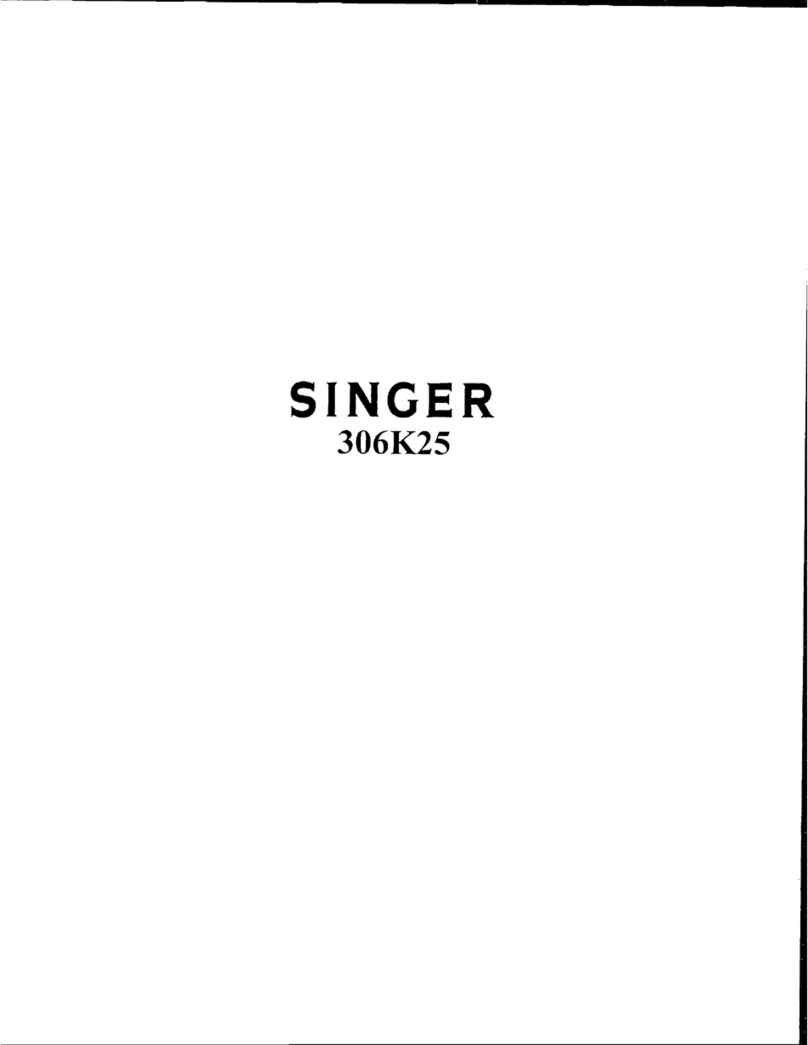Grace Company Q'nique 19 X User manual

Service Manual
Copyright June 16, 2022 V 1.2The Grace Company

i
Important Safeguards
When using an electrical appliance, basic safety precautions should always be followed,
including the following.
DANGER - To reduce the risk of electric shock, do not leave the machine unattended when plugged
in. Always unplug this machine from the electric outlet immediately after using and before cleaning.
WARNING - To reduce the risk of burns, re, electric shock, or injury to persons:
• This appliance is not to be used by persons (including children) with reduced physical, sensory, or
mental capabilities, or lack of experience and knowledge, unless they have been given supervision or
instruction concerning use of the appliance in a safe way and understand the hazards involved.
• Children should be supervised to ensure that they do not play with the appliance. Children shall not
play with the appliance.
• Cleaning and user maintenance shall not be made by children without supervision.
• Use this machine only for its intended use as described in this manual. Use only attachments
recommended by the manufacturer as contained within this manual.
• Never operate this machine if it has a damaged cord or plug, it is not working properly, or it has been
dropped, damaged, or dropped into water. Return the machine to the nearest authorized dealer or
service center for examination, repair, or electrical or mechanical adjustment.
• Never operate the machine with any air openings blocked. Keep ventilation openings of the quilting
machine free from the accumulation of lint, dust, and loose cloth.
• Never drop or insert any object into any opening.
• The appliance is intended for indoor use only. Do not use outdoors.
• Do not operate where aerosol (spray) products are being used or where oxygen is being
administered.
• Connect this appliance to a properly grounded outlet only. See grounding instructions on next page.
• To disconnect, turn all controls to the o position, then remove the plug from the outlet by grasping
the plug. Do not pull on cord. Always switch o or unplug the appliance when leaving it unattended.
• Do not unplug by pulling on cord. To unplug, grasp the plug, not the cord.
• If the supply cord is damaged, it must by replaced by the manufacturer, its service agent or similarly
qualied persons in order to avoid a hazard.
• Keep ngers away from all moving parts. Special care is required around the quilting machine needle.
• Always use the proper needle plate. The wrong plate can cause the needle to break.
• Do not use bent or damaged needles.
• Do not pull or push fabric while stitching. It may deect the needle, causing it to break.
• Switch the quilting machine o when making any adjustments in the needle area, such as threading
the needle, changing the needle, or changing the presser foot, etc.
• Always unplug the quilting machine from the electrical outlet when removing covers, lubricating, or
when making any other user servicing adjustments mentioned in the instruction manual.
• CAUTION: In order to avoid a hazard due to inadvertent resetting of the thermal cut-out, this
appliance must not be supplied through an external switching device, such as a timer, or connected
to a circuit that is regularly switched on and o by the utility.
If using this machine in an area with inconsistent input power, it is recommended the surge protector
is connected to a backup battery supply.
SAVE THESE INSTRUCTIONS!
Do not discard box or packaging.

ii
Important Safeguards (continued)
GROUNDING INSTRUCTIONS
This product must be grounded. In the event of malfunction or breakdown, grounding provides a path
of least resistance for electric current to reduce the risk of electric shock. This product is equipped
with a cord that has an equipment-grounding conductor and a grounding plug. Plug the cord from the
quilting machine into a surge protector. The surge protector must be plugged into an appropriate outlet
that is properly installed and grounded in accordance with all local codes and ordinances.
DANGER - Improper connection of the equipment-grounding conductor can result in a risk of electric
shock. The conductor with insulation having an outer surface that is green, with or without yellow
stripes, is the equipment-grounding conductor. If repair or replacement of the cord or plug is necessary,
do not connect the equipment-grounding conductor to a live terminal. Check with a qualied electrician
or serviceman if the grounding instructions are not completely understood, or if in doubt as to whether
the product is properly grounded.
Do not modify the plug provided with the product — if it will not t the outlet, have a proper outlet
installed by a qualied electrician.
Grounding Methods
Figure 61.1
(B)
Cover of
Grounded
Outlet Box
Metal
Screw
(A)
Grounding
Pin
Surge
Protector
To Sewing
Machine
(C)
Adapter
Grounding
Means
(D)
Grounding
Pin
Surge
Protector
To Sewing
Machine
Grounding
Conductor
This product is for use on a nominal 120 V circuit, and has a grounding pin as illustrated above (A). A
temporary adapter, shown in (B) and (C), may be used to connect this plug to a 2-pole receptacle (B) if
a properly grounded outlet is not available. The temporary adapter should be used only until a properly
grounded outlet can be installed by a qualied electrician. The green colored rigid ear, lug, and the like,
extending from the adapter must be connected to a permanent ground such as a properly grounded
outlet box cover. Whenever the adapter is used, it must be held in place by the metal screw.
A qualied electrician should be consulted if there is any doubt as to whether an outlet box
is properly grounded.
Grounding Methods

iii
Table of Contents
Important Safeguards ............................................................................................................ i
Table of Contents..................................................................................................................iii
Machine Specications ..........................................................................................................iv
Machine Layout .....................................................................................................................v
Ports and Plugins................................................................................................................. vii
Servicing Parts
Oiling and Cleaning............................................................................................................... 1
Choosing Your Needle ........................................................................................................... 4
Changing the Needle............................................................................................................. 6
Changing the Hopping Foot ................................................................................................... 8
Replacing the Thread Mast ...................................................................................................10
Replacing the Thread Stand..................................................................................................11
Replacing the Display...........................................................................................................12
Replacing the Bobbin Winder System ....................................................................................14
Replacing the Power Cord Retainer .......................................................................................16
Replacing the Handlebars.....................................................................................................17
Replacing the LED Lamp ......................................................................................................20
Replacing the Front Display Board.........................................................................................24
Replacing the Motor Driver Board .........................................................................................26
Replacing the Main Board.....................................................................................................28
Replacing the Small Thread Tensioner ...................................................................................30
Replacing the Large Thread Tensioner...................................................................................32
Replacing the Thread Cutter.................................................................................................36
Checking the Thread Guides.................................................................................................37
Replacing the Needle Bar Thread Guide.................................................................................40
Replacing the Bobbin Springs ...............................................................................................42
Replacing the Encoder Spring ...............................................................................................46
Replacing the Upper Encoder................................................................................................49
Replacing the Lower Encoder................................................................................................51
Replacing a Machine Wheel ..................................................................................................53
Replacing the Hand Wheel ...................................................................................................55
Reinstalling the Needle Plate ................................................................................................56
Timing the Machine .............................................................................................................58
Replacing the Hook Holder ...................................................................................................62
Firmware and Diagnostics
Updating Display Firmware...................................................................................................65
Updating Machine Firmware .................................................................................................68
Calibrating the Machine Speed..............................................................................................72
Window Oset.....................................................................................................................74
Measure Encoder Test..........................................................................................................76
Button Test .........................................................................................................................80
Needle Sensor Test ..............................................................................................................82
Index..................................................................................................................................84

iv
Machine Specifications
Product Dimensions
Body:
• Height: 680.2 mm, or 26.8 inches
• Width: 395.4 mm, or 15.6 inches
• Length: 831.9 mm, or 32.8 inches
• Weight: 18.8 kg, or 41.5 lbs
Quilting Arm:
• Height: 224.8 mm, or 8.9 inches
• Length: 482.6 mm, or 19 inches
Electrical
• Input Voltage: 85-264 VAC
• Input Frequency: 47-63 Hz
• Output DC Voltage: 24 V
• Output Rated Current: 14.5 A
• Output Rated Power: 350 W
• Accessory Ports: 12 V DC, 0.5 A
Features
• Ergonomic handles and handlebars for
ecient, extended use (page 17)
• 2.4” touch display (page 12)
• Built in bobbin winder
• Dual thread mast and stands for quilting and
winding bobbin at the same time
• Dual wheels for added stability (page 56)
• Edge warning system
• Range of 90 to 2000 stitches per minute
• Regulated stitching
1
2
3
4
5
2
3
1
5
4
Patent: WO 2013/070633 Al
Additional Patents Pending
Note: Use
Lubriplate®FMO
series oil (or similar
clear mineral oil).

v
Machine Layout
Quilting Machine (Side View)
1. Hand Wheel
Raises and lowers the needle bar.
2. Bobbin Thread Tensioner (page 14)
Tensions thread when winding a bobbin.
3. Bobbin Thread Cutter (page 14)
Cuts wound bobbin thread.
4. Bobbin Stand (page 14)
Holds the bobbin for winding.
5. Bobbin Winder Buttons (page 14)
Start and stop bobbin winding.
1. Bobbin Wind Thread Stand (page 11)
Holds a cone of thread for winding bobbin.
2. Thread Mast (page 10)
Guides thread when quilting.
1. Top Thread Stand (page 11)
Holds a thread cone for threading machine.
2. Thread Guide Rod (page 37)
Positions thread when quilting.
• Small Thread Tensioner (page 30)
Tensions thread when quilting.
• Take-Up Lever
Tensions thread when quilting.
3. 2.4” Touch Display (page 12)
Provides access to quilting options.
1
3
4
5
6
7
8
2
10
9
11
12
1
7
32
4
5
6
9
14
13
8
10
11
12
15
16
17
18
19
20

vi
Machine Layout (continued)
4. Handlebar Controls (page 17)
Controls machine functions.
• Tensioner Check Spring (page 32)
Applies additional tension to thread.
• Large Thread Tensioner (page 32)
Tensions thread as adjusted when quilting.
• Thread Guides (page 37)
Positions thread when quilting.
5. Handle Bar Clamp (page 17)
Used to adjust handlebar position.
6. Handle Bar Levers (page 17)
Used to adjust handle position.
7. Lamp (page 20)
Lights up needle area when machine is on.
• Machine Wheels (page 56)
Shuttles the machine up and down the
bottom carriage.
13
14
15
16
17
18
Hook Assembly (Front View)
• Thread Cutter (page 36)
Cuts excess thread from threading machine.
• Needle Bar (page 6)
Holds the needle when quilting.
• Hopping Foot (page 8)
Presses fabric down when quilting.
• Needle Plate (page 59)
Covers top of hook assembly.
• Timing Cut-Out (page 61)
Accesses hook assembly set screws.
• Hook Assembly (page 65)
Holds the bobbin case and hooks the top
thread to create stitches.
• Bobbin Case (page 42)
Holds M-class bobbin and controls bottom
thread tension.
• Hook Assembly Cover
Covers the hook assembly area.
19
20
21
22
24
23
25
26
27
21
22
23
24
25
28
26
28
27

vii
Ports and Plugins
Power On/O Switch
Turns machine on and o.
Upper Encoder Port (page 54)
Connects encoders to machine.
Lower Encoder Port (page 52)
Connects encoders to machine.
Quilt Motion Tablet Port
For optional automation accessory.
USB Connector Port (page 71)
For updating only.
Power Port with Retainer (page 16)
Connects and holds power cord to the
machine.
Accessory Ports
For laser accessory.
Back Handle Ports
For back handle accessory.
1
3
4
5
6
7
8
2
1
Machine Rear (Underside View)
2
3
4
5
6
8
7

viii
Ports and Plugins (continued)
9
Machine Front
Machine Throat
10
11
Display Cable Port (page 12)
Connects display cable to machine.
Accessory Ports
For laser accessory.
Left Handlebar Port (page 17)
Plug the left handlebar cable into the
machine.
Right Handlebar Port (page 17)
Plug the right handlebar cable into the
machine.
10
11
12
12
9

1
19X Service Manual
Oiling and Cleaning
Instructions
Tip: The “Hours” counter on the Projects screen can be used to track hours of quilting time (see your
machine manual for details).
Take the following steps to clean and oil the machine:
Parts & Tools Needed:
Lint Brush (Tools Box)
Oil Bottle
Oil and Clean:
Machine
• At the start of a new project
• After 20 hours of use
• After sitting without use for more than 30 days
Hook Assembly • Every other bobbin change
4
3
2
1
Large Thread
Tensioner
1. Power o the machine.
2. Set the large thread tensioner to “1” to expose the tensioner discs. Use the lint brush or a can
of compressed air to clear away lint and thread remnants.
Note: Lint build-up between the tensioner discs can prevent proper thread tensioning.
1
2
• Compressed Air Can (optional; not included)
Note: Use Lubriplate®FMO series oil
(or similar clear mineral oil).

2
19X Service Manual
Oiling and Cleaning (continued)
9. Place 1-2 drops of oil into the hook assembly
between the inner part (shown in gray) and
outer part (shown in blue).
3. Set the bobbin aside. Clean the bobbin case
with the lint brush or compressed air. Be
sure to clean the area under the bobbin
tension thread arm.
7. In and around the hook assembly, clear
away any lint, cloth, and thread remnants.
8. Rotate the hand wheel until the needle is
halfway down. This will put the hook in the
best position for oiling.
2. Pull the release lever (shown in blue) on
the bobbin case to remove it from the hook
assembly. If the case won’t release, raise the
needle with the hand wheel at the rear of
the machine.
1. Clear debris from the spring and discs of the
small thread tensioner.
4
3
5
6
7
8
Small Thread
Tensioner
Bobbin Thread
Tension Arm
Hook Assembly
1-2 Drops
Hand
Wheel

3
19X Service Manual
Oiling and Cleaning (continued)
1. Power up the machine. Run the machine in
manual or cruise stitching modes without a
bobbin installed for about 10 seconds. This
will distribute the oil in the hook assembly
without getting oil on your bobbin thread.
2. Pull the tab on the display board cover to
remove it from the machine.
1. Reload the bobbin case and return it to
the machine (for detailed instructions on
tensioning the bobbin case, see page 42).
Close the hook assembly cover.
9
10
Unplug the display cable from the port on
the machine.
3. Place 1-2 drops of oil on the needle bar.
Then replace the display board cover and
plug the display back into the port.
12
11
13
1. Wipe down the needle bar regularly to
prevent oil from accumulating and dripping
onto your quilt.
14
Needle Bar
1-2 Drops
Display Cable
Display Board
Cover

4
19X Service Manual
Choosing Your Needle
Needle Sizes
Needle Size Thread Size and Type
14 / 90 • mono-lament
• 100 wt. silk
• 60 wt. polyester
16 / 100 • mono-lament
• 60 wt. polyester or cotton
• 50 wt. cotton
18 / 110 • 50 wt. polyester
• 40 wt. cottons and polyester
• 30 wt. cotton and polyester
20 / 125 • 30 wt. or heavier of any thread
The following are the recommended needle styles for your machine:
• DPX5 MR
• 134 MR
• 1955 MR
Choose the size of your needle based upon the thread you’re using. Thicker thread requires a thicker
needle. Remember, the thicker the thread, the lower the thread weight (wt.) number.
Using the wrong type of needle, or using a needle that is bent, broken, or blunt, can damage the
fabric, the machine, and needle. For best results:
• Use the recommended needle style for your machine (see below).
• Use the needle size appropriate for the weight and type of thread you’re using (see below).
• Never use a needle that is dull, bent, burred, or damaged.
• Use multi-directional needles.
• Change your needle after 8 hours of use and at the beginning of each project.
Needle Style

5
19X Service Manual
• Shank: Where the needle bar grasps the needle.
• Shaft: The long, narrow part of the needle. Needle size is based upon the diameter of the
needle shaft.
• Groove: Reaching from the top to the bottom of the needle shaft, the groove allows thread to
pass through the fabric more easily and without getting damaged.
• Eye: Hole near needle point where the needle is threaded.
• Scarf: A cut-away on the back of the needle that allows the needle to t smoothly within the
hook assembly when quilting.
• Point: The sharp end of the needle. Choose the type of needle point to t your project, and
always replace your needle once the point is dull.
Needle Diagram
Needle Front View Needle Side View
Shaft
Eye
Point
Scarf
Shank
Groove
Choosing Your Needle (continued)

6
19X Service Manual
Changing the Needle
Parts & Tools Needed:
Needle Needle Magnet
Instructions
A broken, bent, or burred needle may break thread, damage fabric, or even damage the machine.
Always check that the needle is in good repair before starting a new project, and replace the needle
after eight hours of use.
Straight Needle Bent Needle
To avoid damage to the machine, please choose an approved needle style from the list below:
• DPx5 MR
• 134 MR
• 1955 MR
To change the needle, take the following steps:
1. Power o the machine.
For information on selecting a
needle, see page 4.
2. With the hand wheel, raise the needle so it
clears the hoop part of the hopping foot.
3. Loosen the needle thumb screw and pull
down the needle. If needed, use a at-head
screwdriver.
Needle
Thumb Screw
Hand
Wheel
1
23

7
19X Service Manual
Changing the Needle (continued)
5. Insert the new needle all the way into the
needle bar. Check the needle bar sight
hole above the thumb screw to make sure
the needle is inserted all the way.
Needle Bar
Sight Hole
Needle
6. The scarf, a cut-out on the back of the
needle, should face the throat of the
machine. Place the needle magnet on the
opposite side of the scarf.
7. Use the needle magnet as a visual guide.
Twist the needle until the magnet points as
straight out from the machine as possible.
Note: Do not attempt to adjust the needle
by moving the magnet directly.
8. Hand-tighten the thumb screw. Do
not over-tighten if using the at-head
screwdriver.
4
5
6
7
Needle
Magnet
Scarf

8
19X Service Manual
Changing the Hopping Foot
Removal Instructions
To remove the hopping foot for maintenance or to adjust the hopping foot angle, take the following
steps:
1. Power o the machine.
2. With the hand wheel, raise the needle so it clears the hoop part of the hopping foot.
3. Use the 3 mm Allen wrench to remove the hopping foot screw.
Hopping Foot
Screw
The hopping foot should now slide free from the presser bar.
Hopping Foot
1
2
3

9
19X Service Manual
Installation Instructions
To install the hopping foot on your quilting machine, please take the following steps:
1. Power o the machine.
2. Slide the slot in the hopping foot onto the hopping foot collar. Use the 3 mm Allen wrench
and hopping foot screw to hold the hopping foot in place, but do not tighten.
1
2
Changing the Hopping Foot (continued)
2. Lower the hopping foot until it rests on
the height tool. Tighten the hopping foot
screw with the 3 mm Allen wrench.
1. Slide the hopping foot height tool (shown
in blue) underneath the hopping foot with
the needle inside the slot.
3 4
Hopping Foot
Screw
Hopping Foot
Hopping Foot
Collar
Hopping Foot
Height Tool
Hopping Foot
Screw

10
19X Service Manual
Replacing the Thread Mast
Parts & Tools Needed:
Instructions
Take the following steps to replace the thread mast without replacing the entire thread stand:
• Use a 2.5 mm Allen wrench to remove the
screw and washer holding the thread
mast to the thread stand.
1
Thread Mast
Screw
• Install the new thread mast to the thread
stand with the same screw,washer, and
the 2.5 mm Allen wrench.
2
T-handle Allen
Wrench 2.5 mm
2.5 mm
Thread Mast
SMP-09-14103
Washer
New Thread Mast
Screw
Washer

11
19X Service Manual
• Slide the new thread stand assembly over the screw holes on the small lip on the right side
of the machine and use the 2.5 mm Allen wrench and two SBHCS M4 x 8 mm screws to
fasten the thread stand in place.
Replacing the Thread Stand
2
Thread Stand Assembly
Parts & Tools Needed:
Instructions
Take the following steps to replace the thread stand assembly:
• Use the 2.5 mm Allen wrench to remove the two M4 x 8 mm SBHCS screws and remove the
old thread stand assembly from the right side of the machine. You may need to push aside
the piece of foam to access the screws.
1
SMP-09-13183
T-handle Allen
Wrench 2.5 mm
2.5 mm
Old Thread Stand
Assembly
SBHCS
M4 x 8 mm (x2)
Foam
New Thread Stand
Assembly
SBHCS
M4 x 8 mm (x2)
Foam
Table of contents
Other Grace Company Sewing Machine manuals
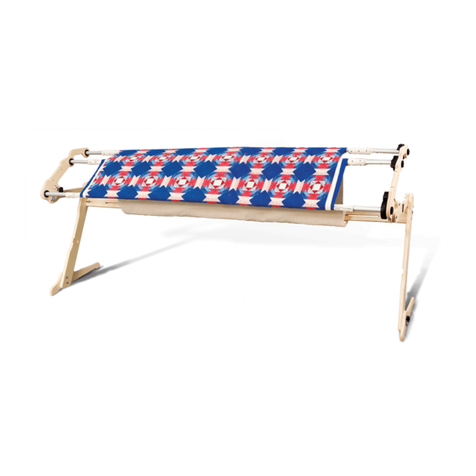
Grace Company
Grace Company NM-EZ3 User manual
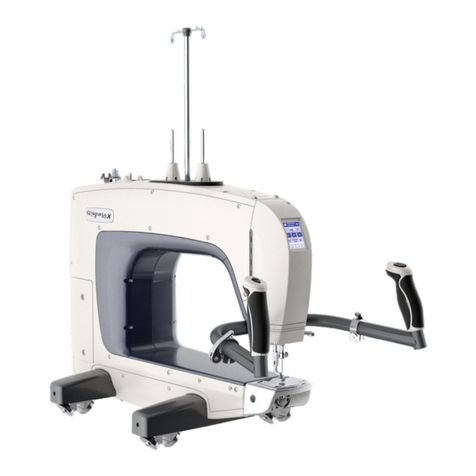
Grace Company
Grace Company Q'nique 16X Manual User manual
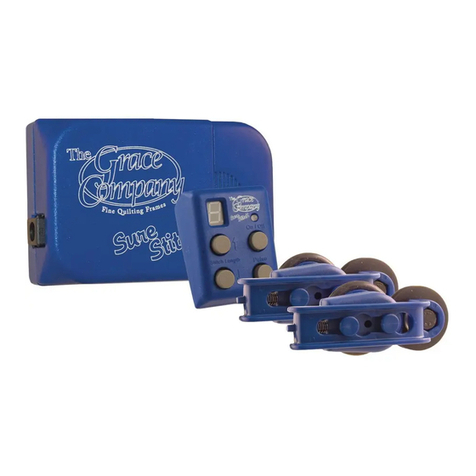
Grace Company
Grace Company Sure Stitch User manual
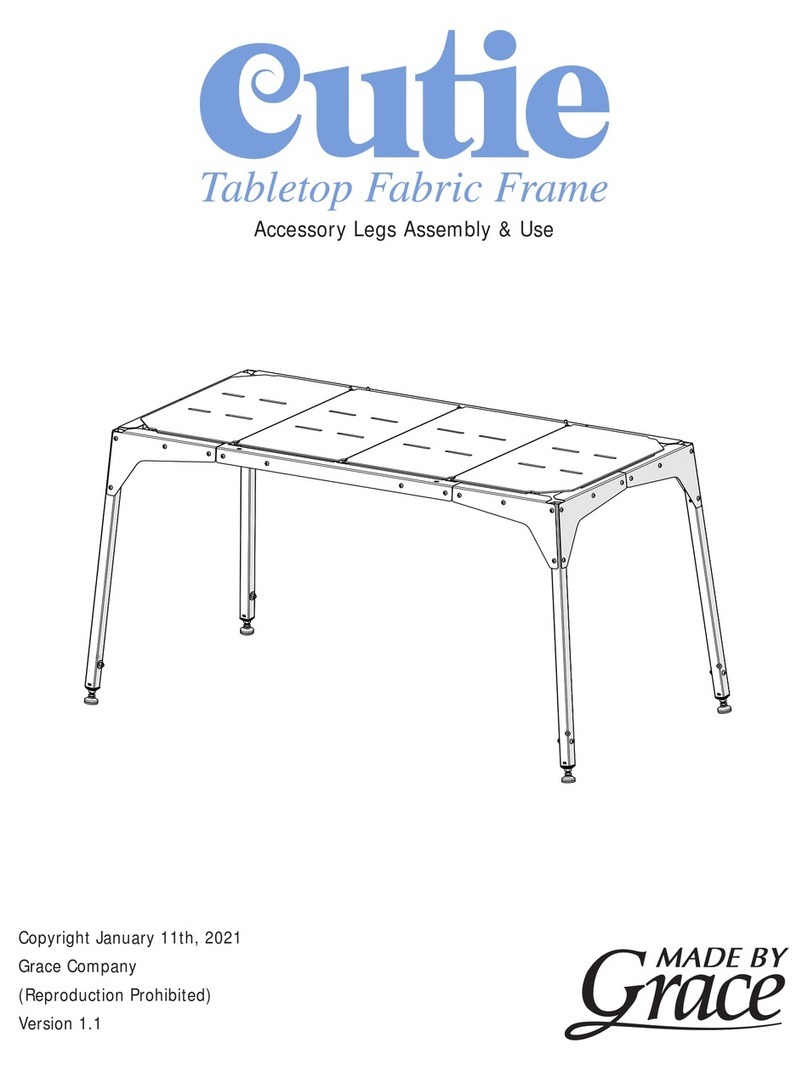
Grace Company
Grace Company Cuite Quick setup guide
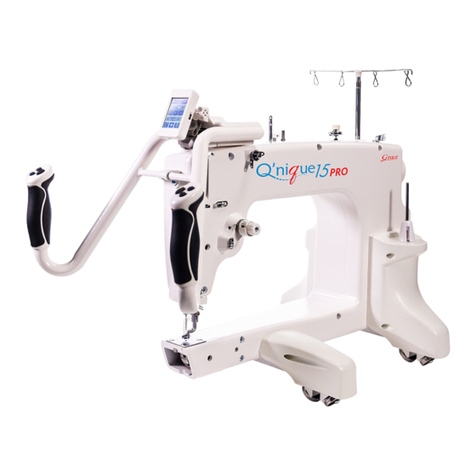
Grace Company
Grace Company G Series User manual
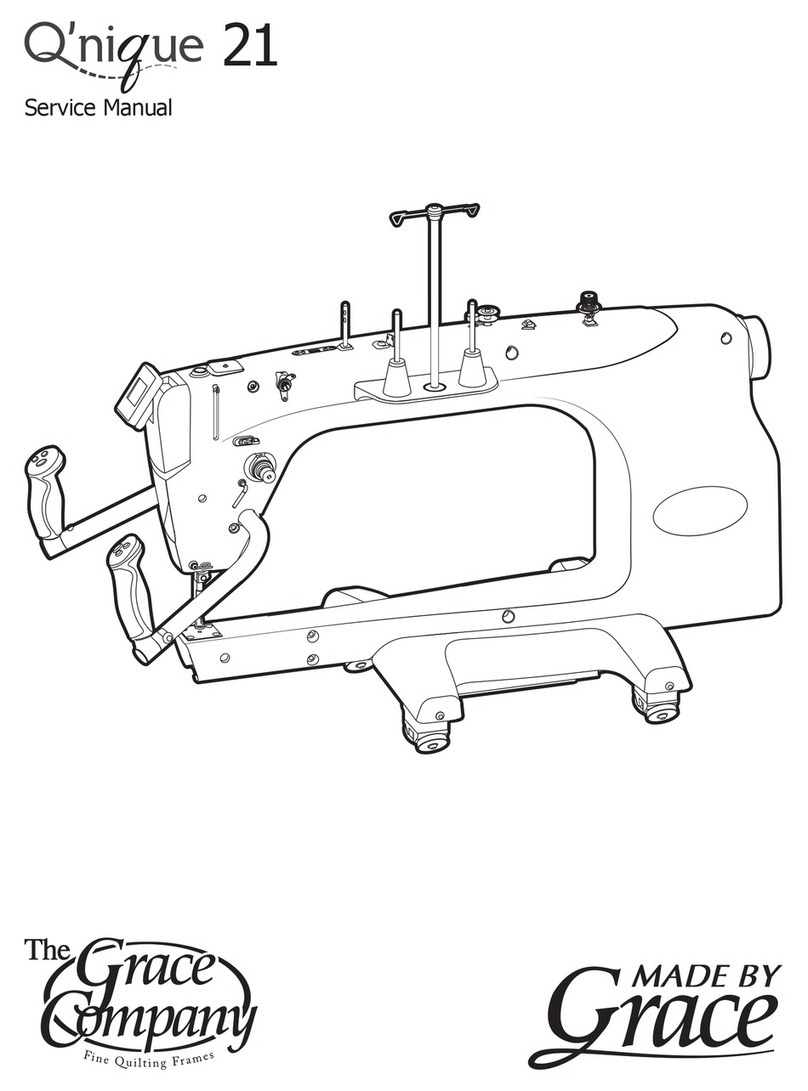
Grace Company
Grace Company Q'nique 21 User manual

Grace Company
Grace Company Q-Zone Queen User manual
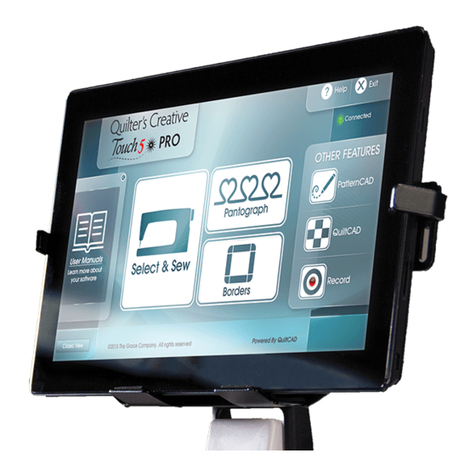
Grace Company
Grace Company QuiltMotion User manual
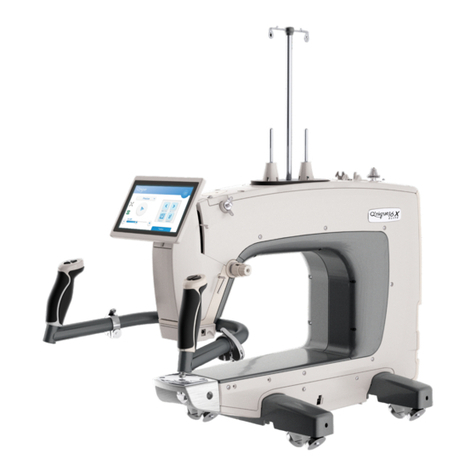
Grace Company
Grace Company Q'nique 16X ELITE User manual
